Garden Update: Early Spring Edition
- Handmade Bits and Bobs
- April 19, 2021
- Food Preservation / Gardening / Kitchen DIY
- 2 Comments
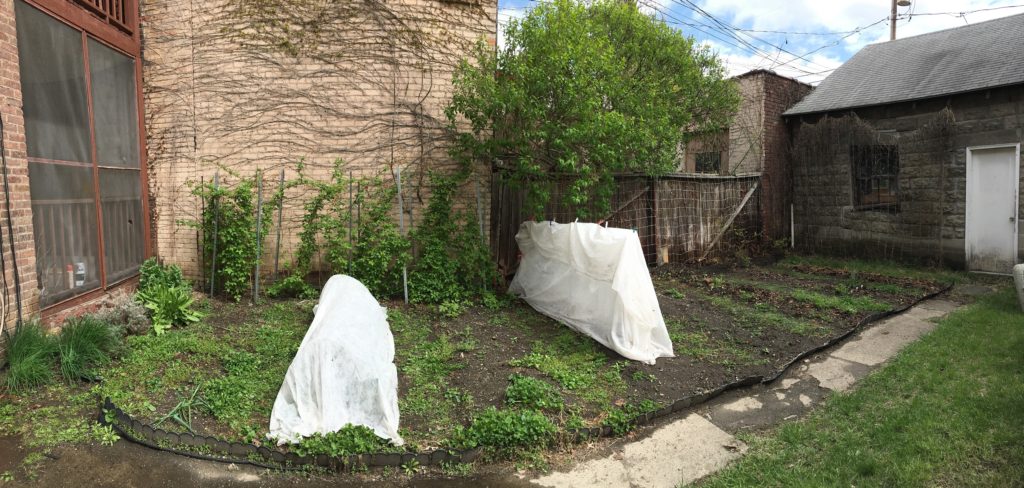
You wouldn’t think there would much to report on the garden front in mid-April from upstate New York. We had several 70° days followed by snow showers a few days later; typical for this time of year. Much of what’s happening is under grow lights in my kitchen but there are some inroads being made out in the garden dirt. Let’s see what’s stirring!
"Off with their heads!"
I sowed my Rosa Bianca eggplant and Hungarian wax pepper seeds at the end of February. Those take a bit of time to get established before they’re ready to produce any flowers and subsequent vegetables. They’ve been growing quite happily under the lights and the peppers just this week started to develop their first flower buds. That’s the signal to snip off their tops, right below the bud.
This encourages the main stem to branch out, making for a much more productive plant. You can see that the leaves below the snip have already started to take off, only a few days later. Theoretically, further snipping on the resulting branches will encourage even more branching, and so on. My growing season is so short I usually just do the one pruning. We’ll see where the pepper plants are when it’s getting closer to planting them out.
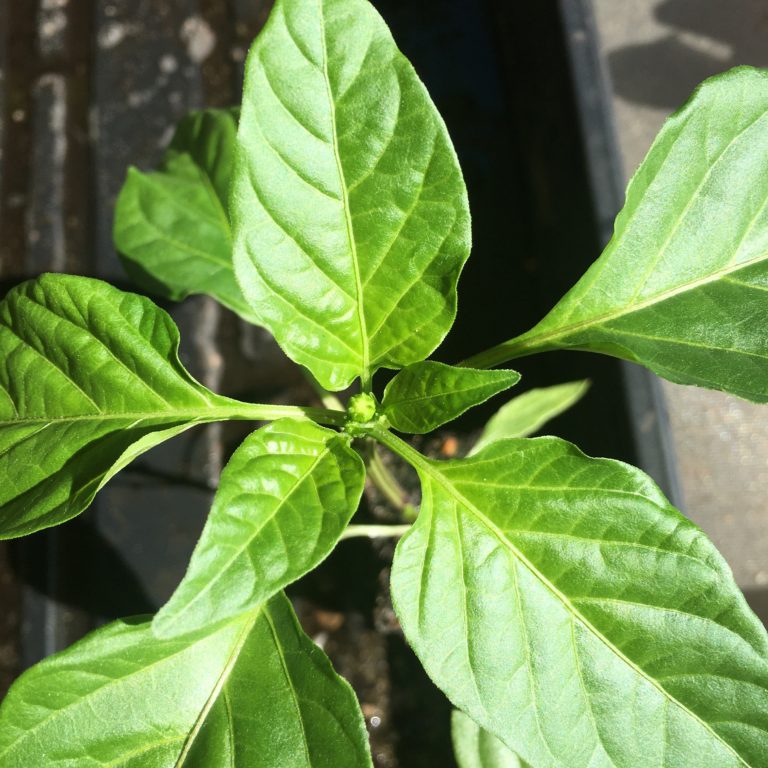
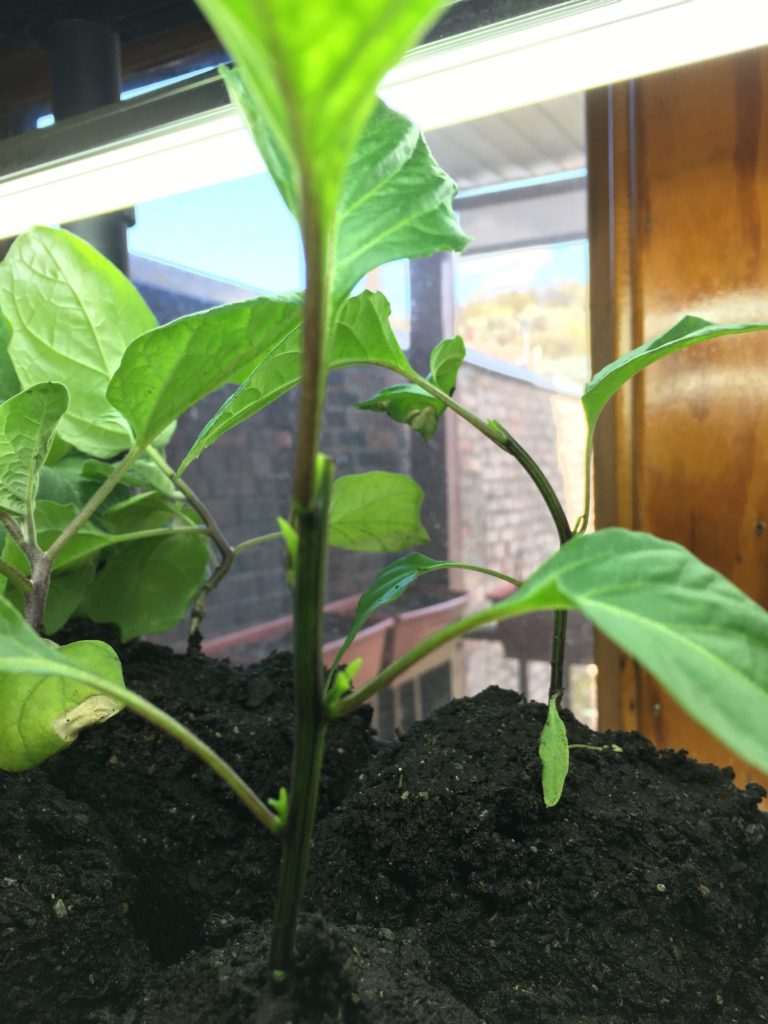
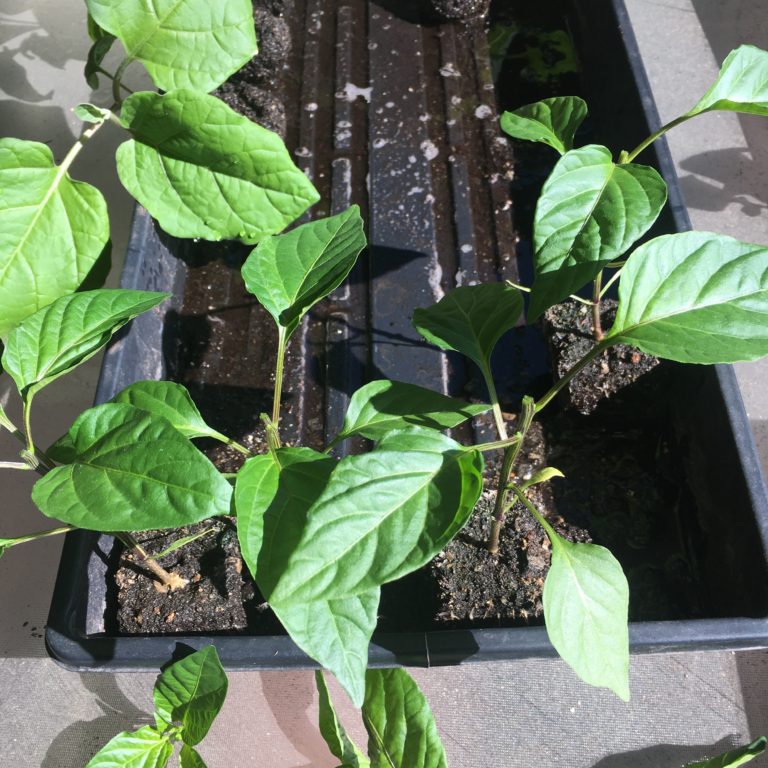
Potting Up
But that won’t be for another four to six weeks as they, along with the eggplant and tomatoes, love hot weather—cool spring not so much. They have grown enough, however, that they’ve outgrown the original soil block they were planted in.
Today I moved them up into the largest size I make. The mold always reminds me of a cow bell but makes a substantially sized block. I find it trickier to get the soil the right consistency to hold its structure with this large size and often end up smushing it into some reasonable shape with my hands.
The mold creates a square-shaped hole in the top that accommodates the size and shape of the original block. The seedling gets dropped right into it, and the roots will continue to grow in the new block. They stop once they hit the air so there’s no getting root bound while the plant continues to grow. I will be doing the same process with my tomato plants once they get big enough. It makes it challenging to find enough real estate under the grow lights for everyone!
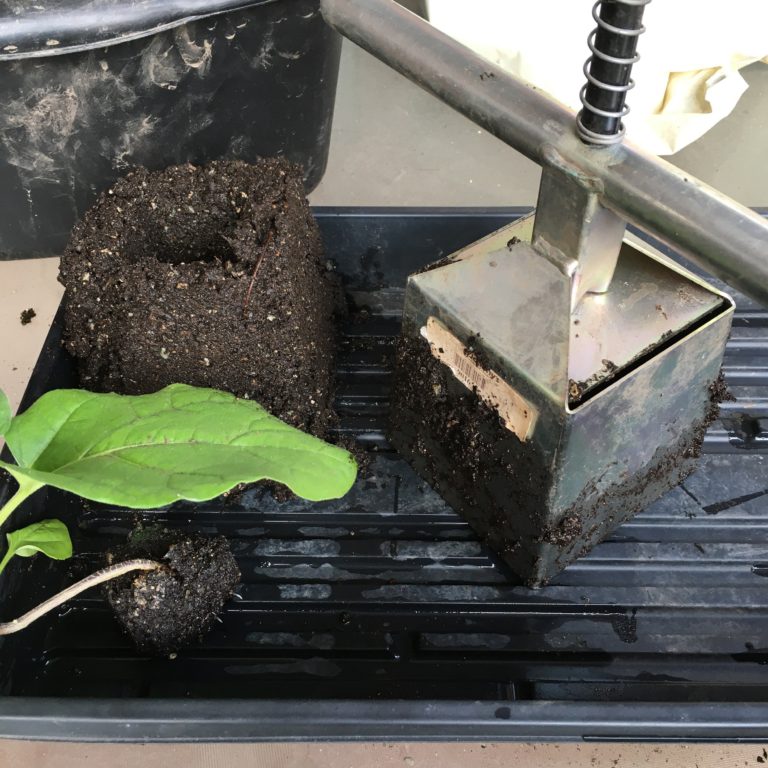
Hardening Off
We’ve had some warm and sunny days, and I started hardening off some of the seedlings. This involves slowing introducing the seedlings to the outdoors, getting them acclimated for life in the garden after the spa treatment they’ve been getting inside.
I take the trays out to my covered back porch, letting them get used to direct sunlight, cooler temperatures, and a breeze in increasingly long intervals. All of those elements would be a shock if the seedlings went straight from under the grow lights into the ground, and make them most unhappy. I do have a fan blowing on the indoor seedlings to get them used to it; it also strengthens their stems and the increased air circulation makes for healthier seedlings.
It was time to thin my lettuce, kale, and chard seedlings. I always sow several seeds per soil block for all plants and let them grow for a bit before deciding which single sprout looks most promising. The rest are carefully pulled out to leave the selected plant to continue on. With these plants, I just toss them into a salad–my own homegrown microgreens.
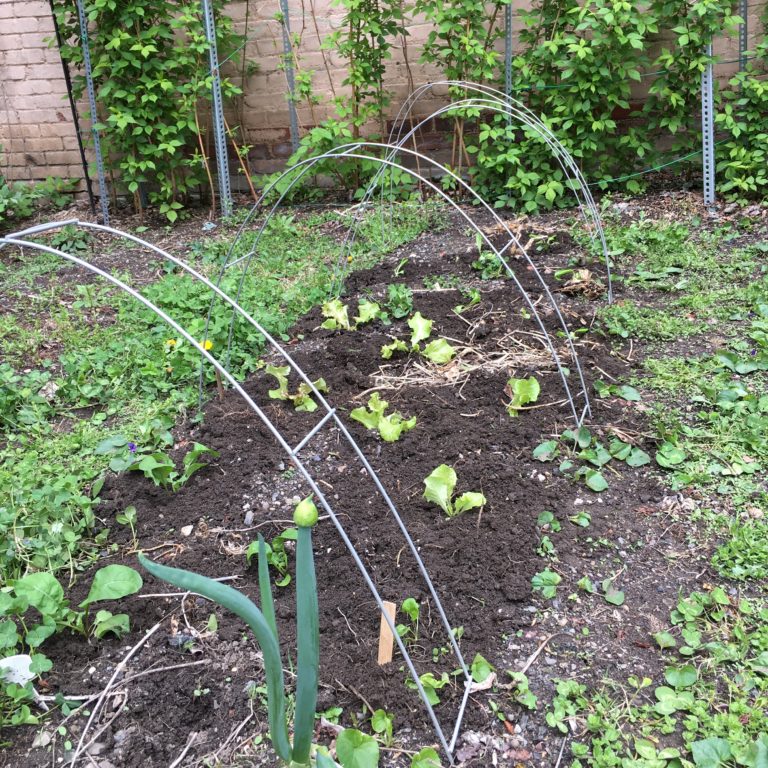
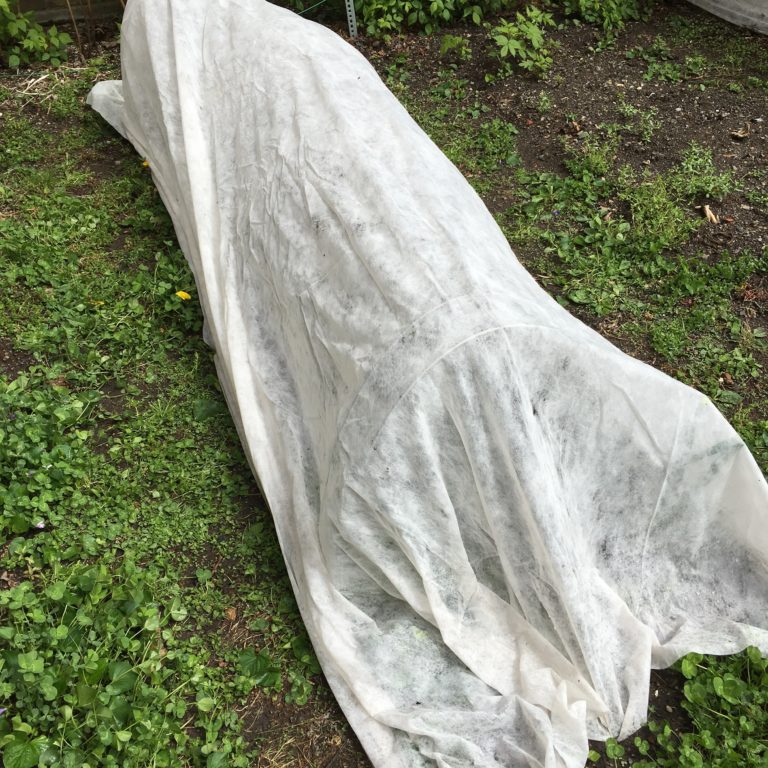
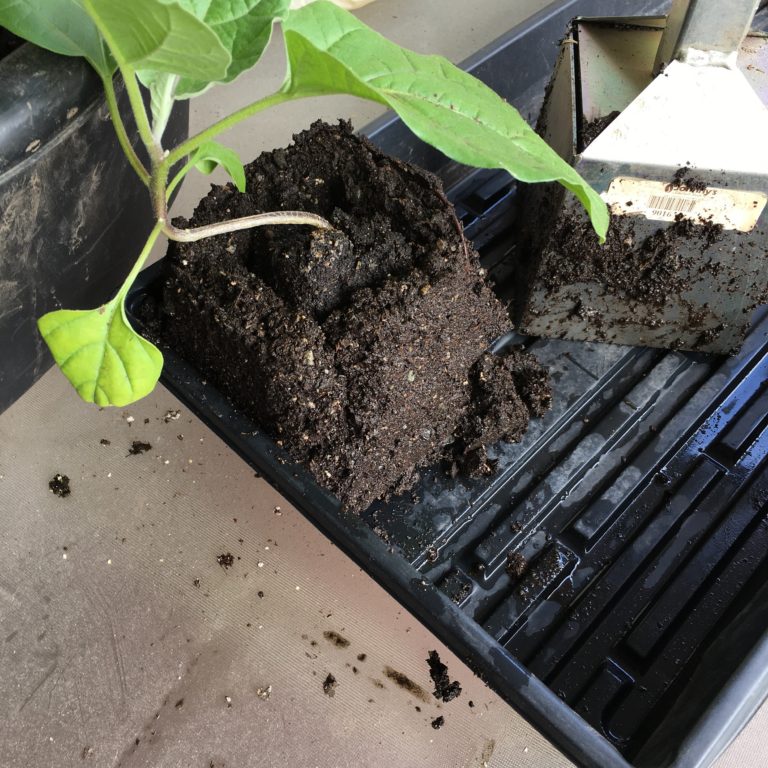
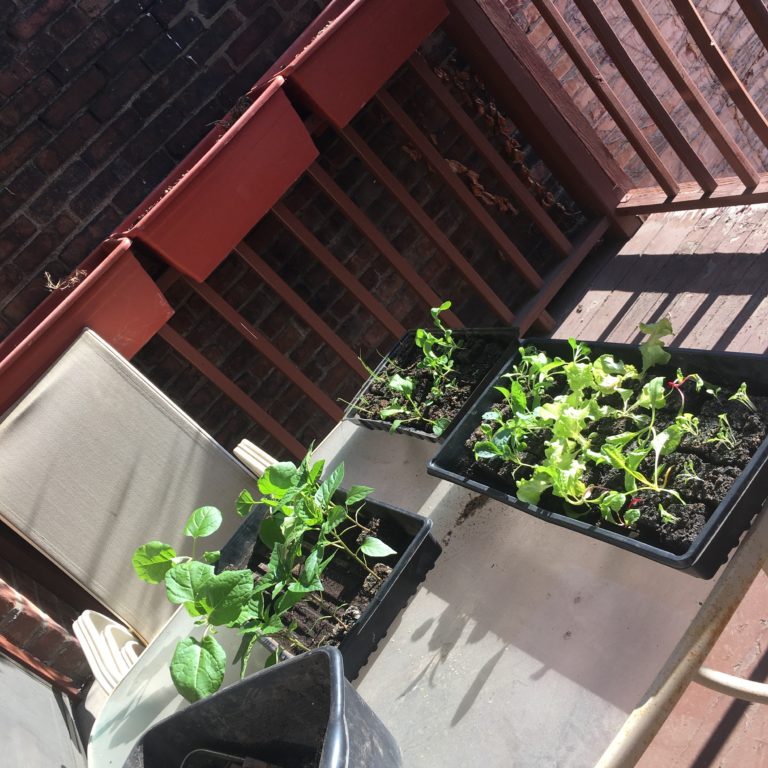
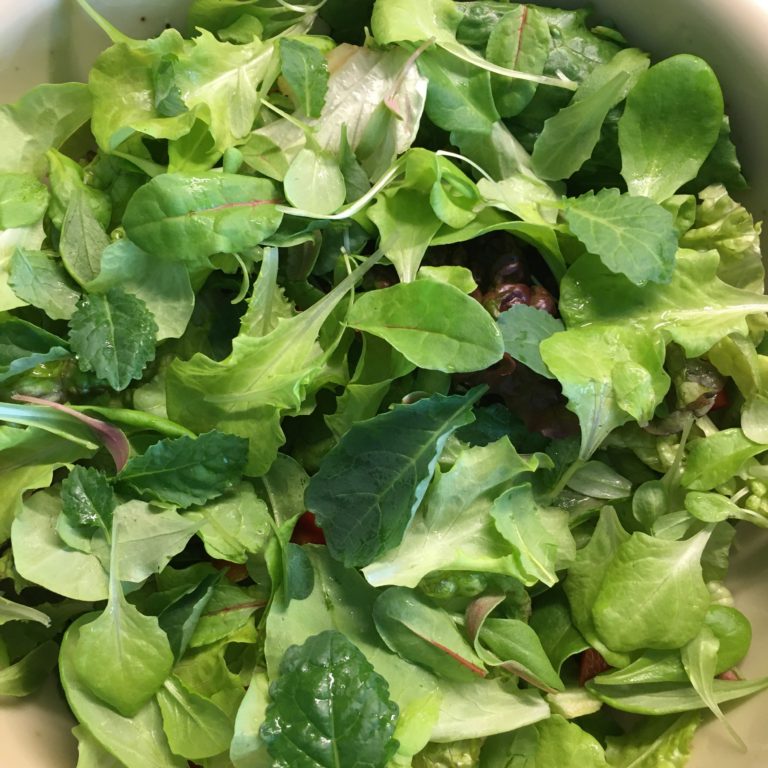
Hoop Tunnel
After hardening off the greens over the last few weeks, they went into the ground today. The forecast is for reasonably warm days and chilly overnights, but nothing below freezing predicted. It’s a little early to be transplanting even the cool-loving plants but I’m rolling the dice. And putting them under cover.
I have tall hoops that bend over the beds. Once transplanted, the seedlings were watered, hoops installed, and then floating row covers draped over the top. The edges are secured with garden staples. This will give the seedlings a few more additional degrees of warmth overnight, while allowing sunlight and rain to come through. It will also prevent anyone from nibbling on them, as has happened in the past. I think the cover will be enough protection over the next few weeks while the transplants get established. If we get a hard freeze, I will double up the row cover for additional protection. My average last frost is May 3 so I am ever optimistic.
Elsewhere in the garden
The peas are making headway. I have them tented with floating row covers, too. The birds and I have an ongoing disagreement about whose pea shoots they are. Last year they pecked them ragged and the peas never really took off. I’m hoping this will give the little sprouts a fighting chance.

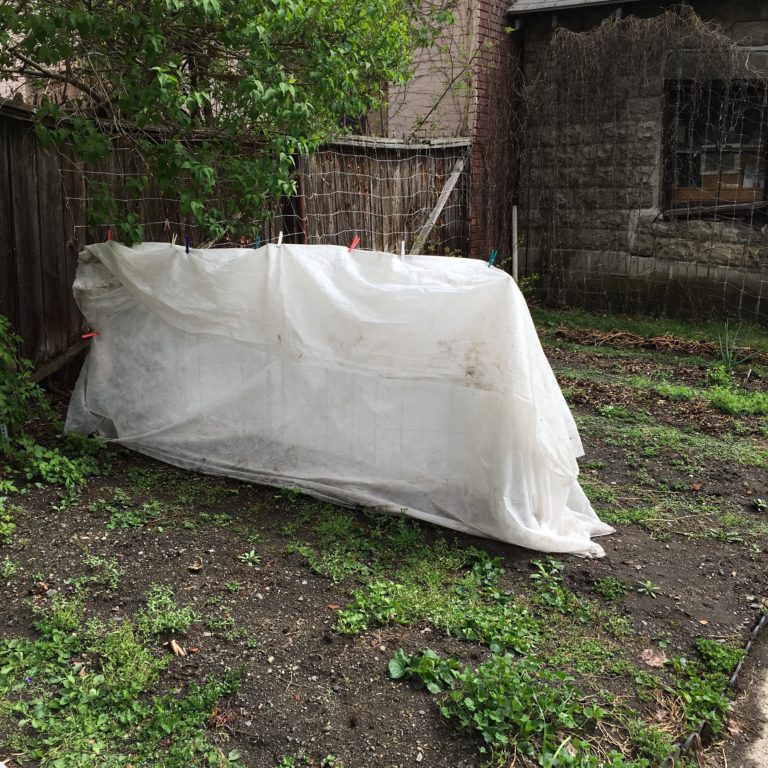
The blueberries have developed their flower buds. Hoping for a better show this year, having added a lot of compost and topsoil to their bed (you can read more about that here). The perennial bed is coming along, with the first chive blossom bud visible today (I use them in salads and to make chive blossom vinegar, which you can read about here). The lavender awaits its annual pruning, but it needs a little more time to start greening up before I do that. The sorrel is up and ready to be picked and the lovage has grown a few more inches this week.
Raspberries are leafing out on last year’s canes, the ones that will produce my spring berries, and the new growth has started to come up, which will produce the fall berries.
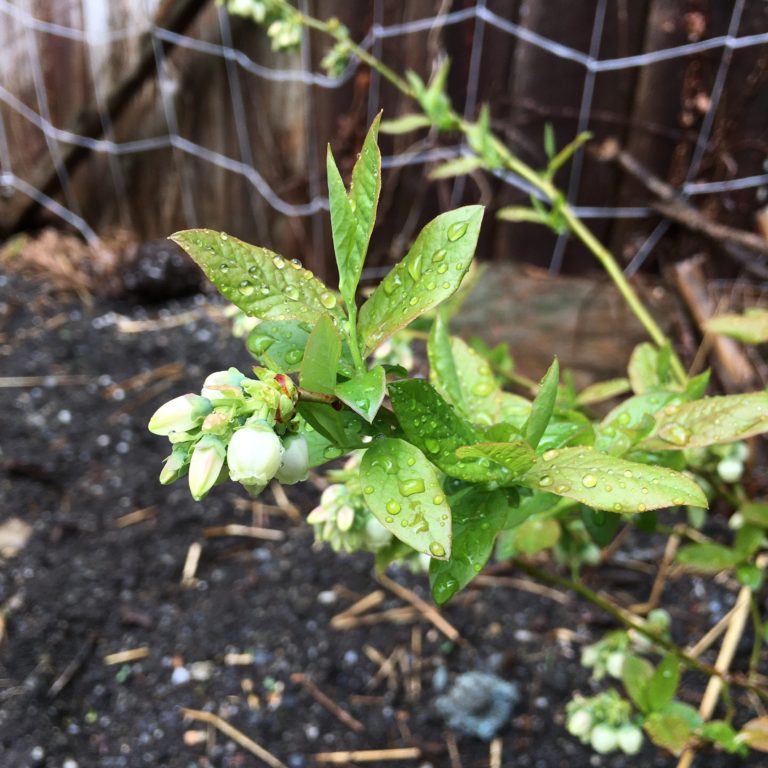
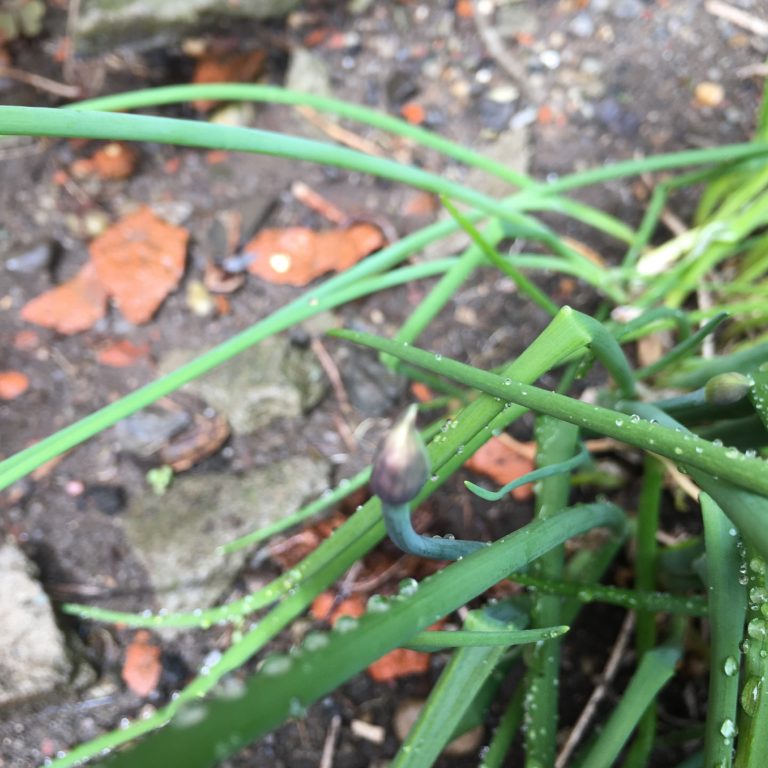
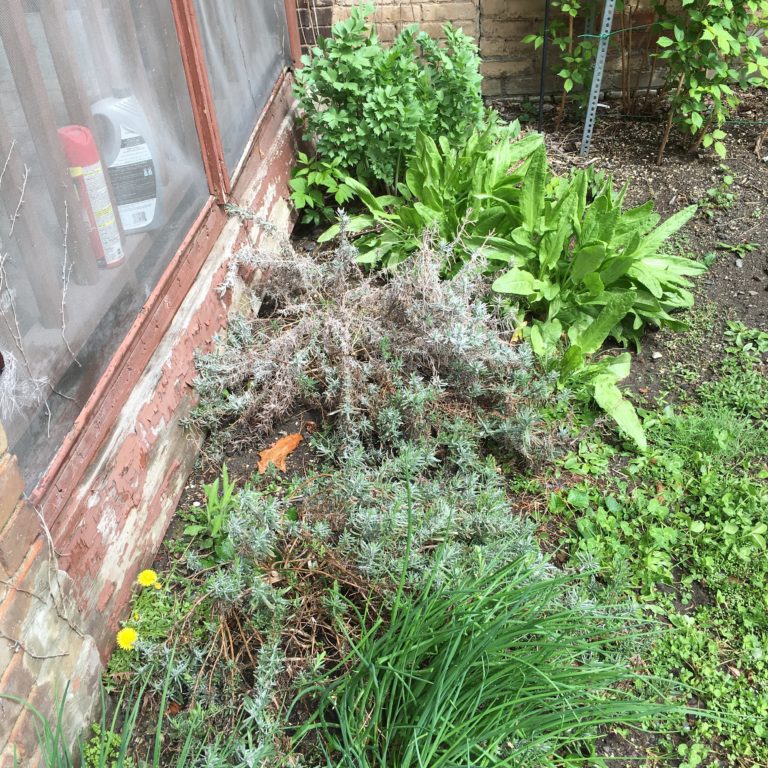
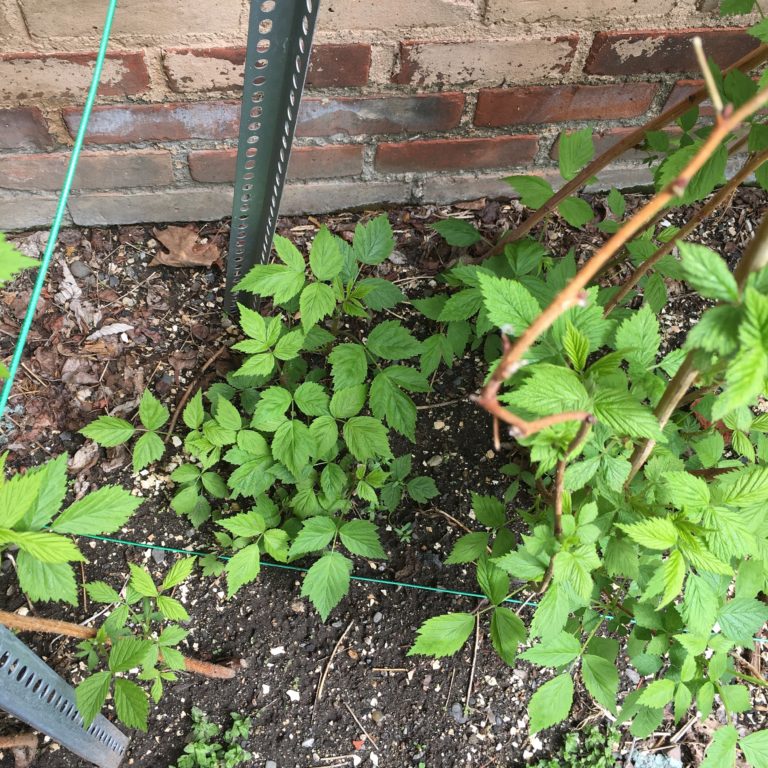
Radishes have just shown themselves, having been sown two weeks ago. Clover seeds, sown at the same time into the paths between the garden beds, have sprouted.
Violets are also up. They’re really weeds, and spread insidiously. I leave them (and dandelions) during this time of year for early pollinators. I’ve learned that they’re edible and have some plans to candy them to use for decorating baked goodies; I’ve also taken to drying and pressing them, but that’s a post for another day.

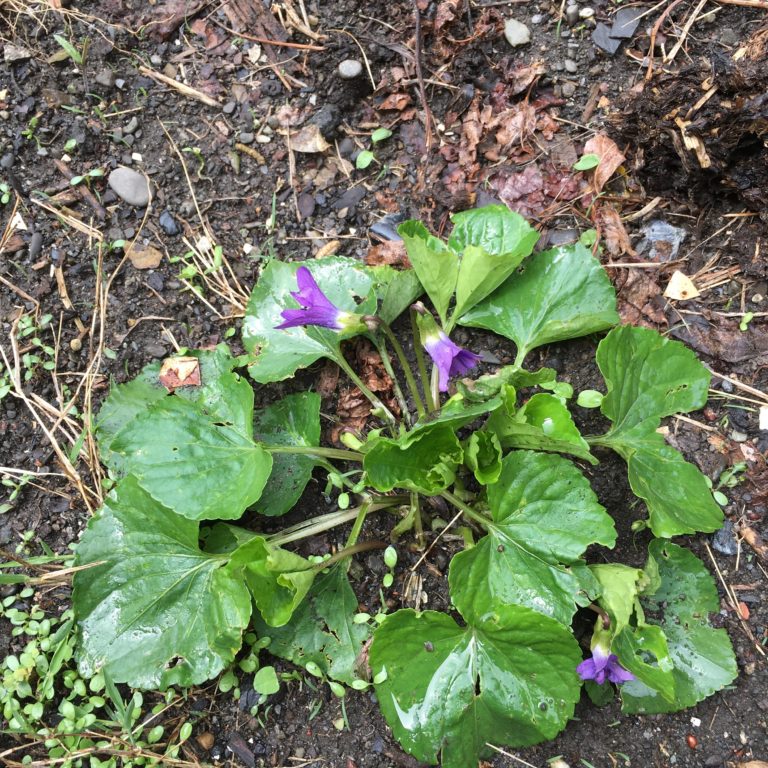
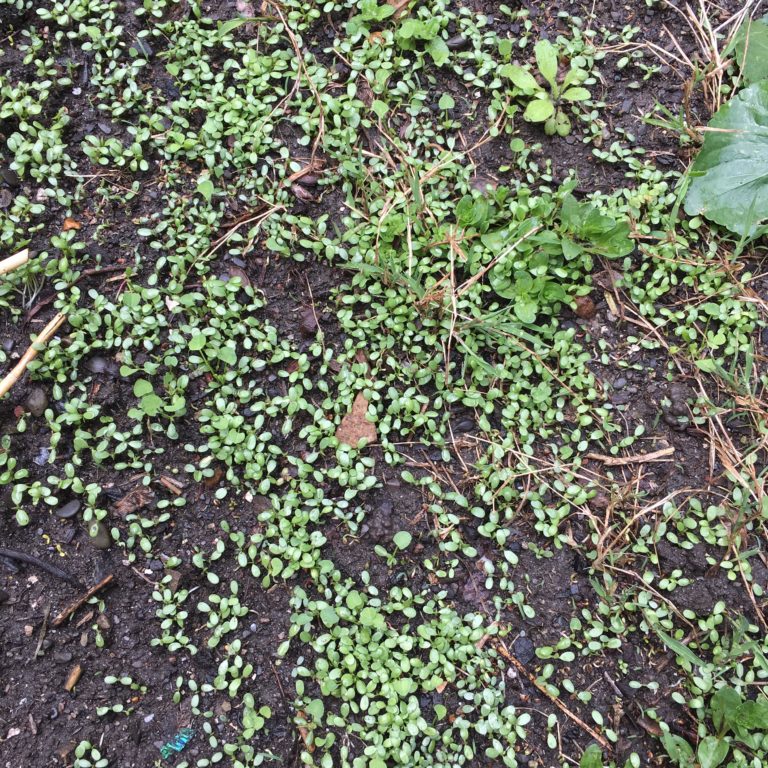
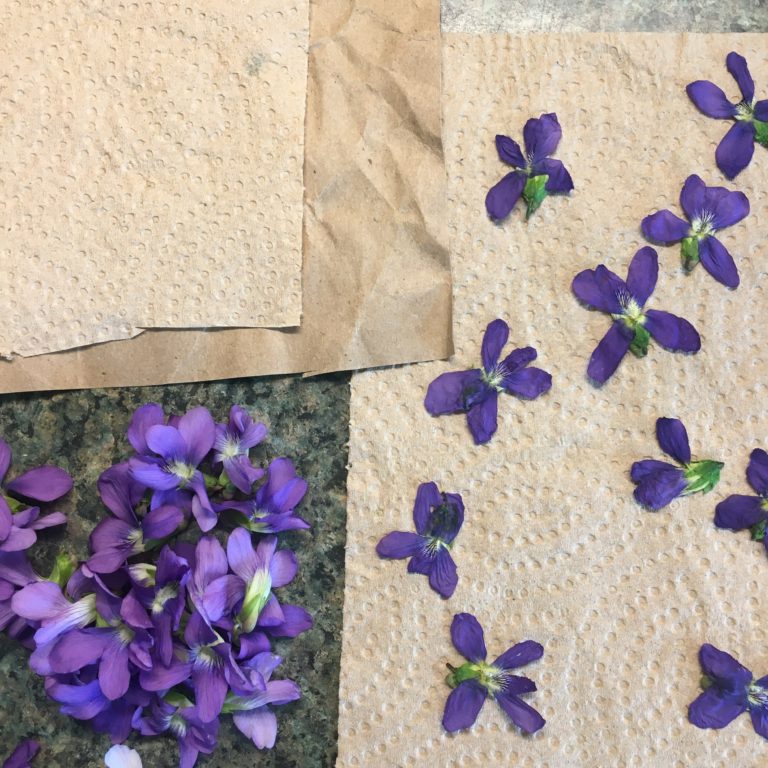
That’s quite a bit of growing over the last two weeks. Stay tuned as spring really kicks in and the work setting the stage for summer shifts into high gear!